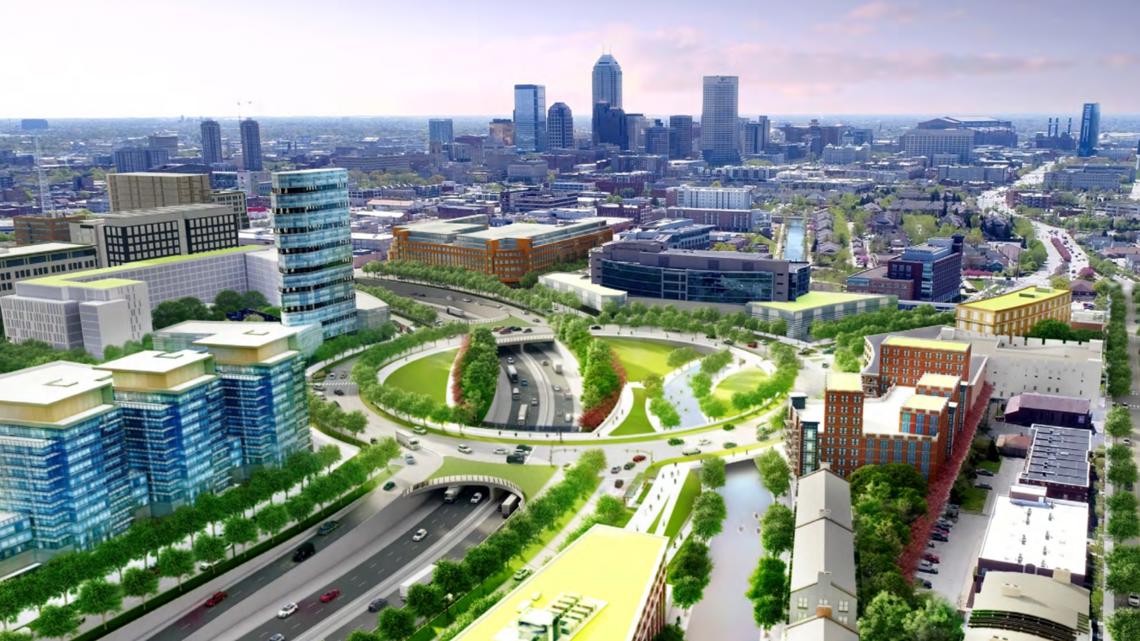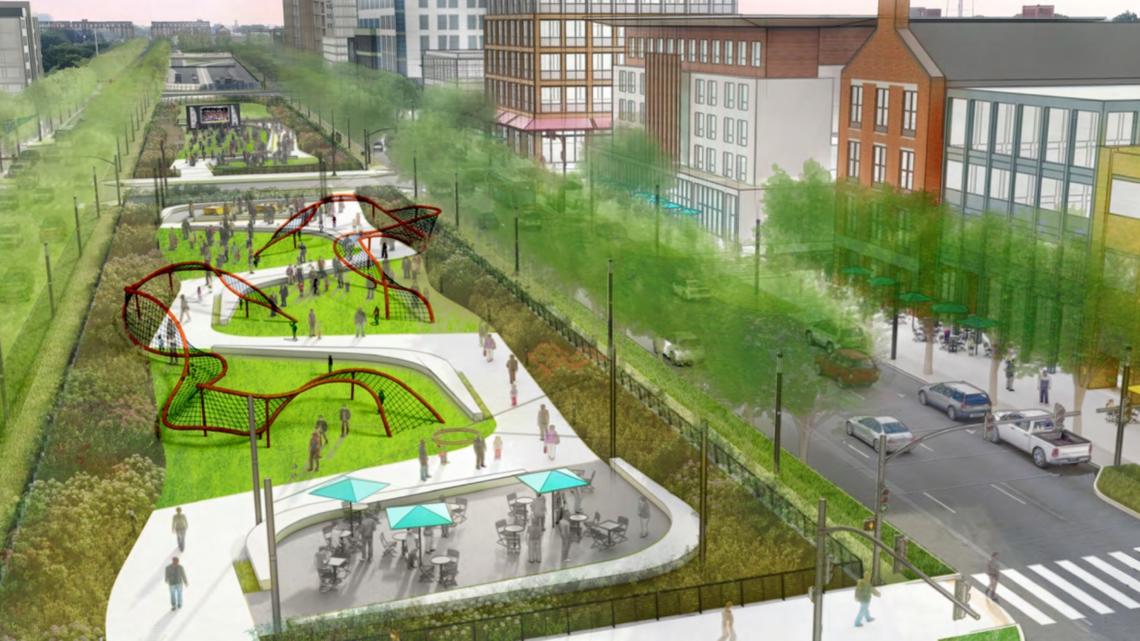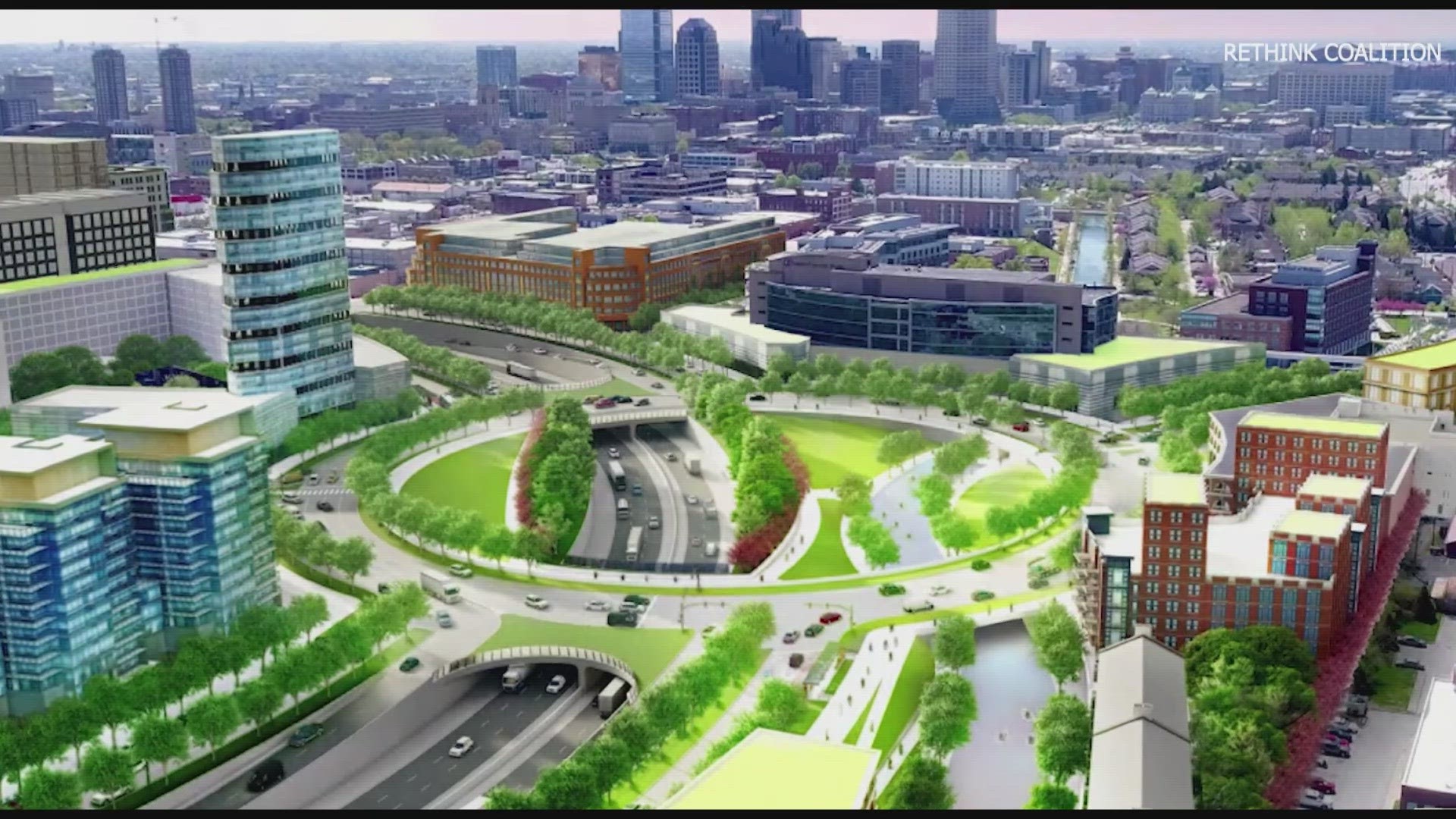INDIANAPOLIS — People working and living in Indianapolis know the din of an interstate that snakes around most of downtown is never that far away.
But what if you could bike, walk or even live on top of it while cars and buses whiz by you, underneath and unperturbed?
They are questions central to a new vision put forth in renderings released by the grassroots group-turned-nonprofit Rethink 65/70 Coalition on Wednesday, as part of their push for a reconsideration of the city’s interstate system. The vision sees large chunks of downtown Indianapolis' inner loop moved below street level to make way for more public space.


Rethink Coalition's renderings show what Indianapolis could look like if the city were to build recessed interstates, a technique that drops the interstate or highway down into a trench of sorts, so that the boulevards are reconnected above.
Renderings show how the technique could create walkable traffic circles, public green space and more housing.
“It makes it easier to access and get across the interstate when you’re just trying to walk or ride your bike, or just stay on the boulevard level of street traffic,” said Brenda Freige, the CEO of Rethink Coalition.
Recessed interstates are nothing new. Cities like Dallas, Boston and Atlanta have already found success turning new land available from moving interstates underground into public parks or retail areas.
The city’s interstates are already nearing the end of their lifecycle, prompting construction projects like the North Split to keep them safe and updated for commuters.


Rethink Coalition's new study was released with the renderings and drew comparisons between two different construction plans for updating the inner loop. One proposal considers a future in which officials update the inner loop as is, focusing only on improvements to existing structures, Another outlines how a recessed interstate construction project could look.
The nonprofit argues throughout the study that the environmental benefits and intercommunity accessibility of the building-recessed interstates makes it the superior option, and one that could help undo some of the community harm that came with building the interstate system in the first place.
An estimated 17,000 people, mostly Black residents, were displaced after the interstate was completed in 1976. At least 8,000 businesses were destroyed, and the architectural culture of Indianapolis was changed, according to Rethink.
“We think it reconnects communities and starts to repair some of the injustices from the past,” Freige said.
If Indianapolis followed other cities in committing to building these recessed interstates — a move which could very likely take decades to complete — Rethink Coalition’s newest study estimates the city could eventually enjoy 45 more acres of new developable land, 19 to 23 cappable acres, 3,300 units of new housing potential and 24,000 more jobs.
Recessed interstate construction has a 25% higher price-point than simply updating the existing interstate, but Rethink Coalition advocates believe the bevy of new land made available would pay for itself over time.
“The tax dollars that can come from that new land can generate enough revenue to cover the gap. And, if you use the value capture financing options, then you can cover the upfront costs,” Freige said.
For now though, the renderings are only a vision — one that’s still far off. The study and rendering were submitted to the Indiana Department of Transportation’s ProPel initiative, which is soliciting input from community members before making strategies that enhance interstate and other traffic projects across Indiana.
“We’re just excited about this moment in our history. It’s not gonna come again for another 50 years, in that we just encourage people to pay attention because of the interstates. Because even though it’s just there, they actually shape our lives,” Freige said.
And the renderings come as city officials prepare to use an influx of $2 million in federal funds to study the only part of the inner loop that’s already recessed. The Fountain Fletcher District, on the southeast inner loop, sees Virginia Avenue going over the top of the highway at street level. The study will look into how to build a cap, or freeway lid, over that area.
Freeway lids are a type of deck bridge that can be constructed over the gap of a sunken freeway or interstate to create more green space. Developers can then create more parks or commercial development within that additional space, and connect it with downtown urban spaces.
That study is scheduled to start in January or February 2024, and will take a year, according to Freige. The Rethink Coalition plans to use insights gleaned from that study to help determine the feasibility of implementing the recessed interstate projects elsewhere in the city.
To see the full study and complete renderings, click here.

